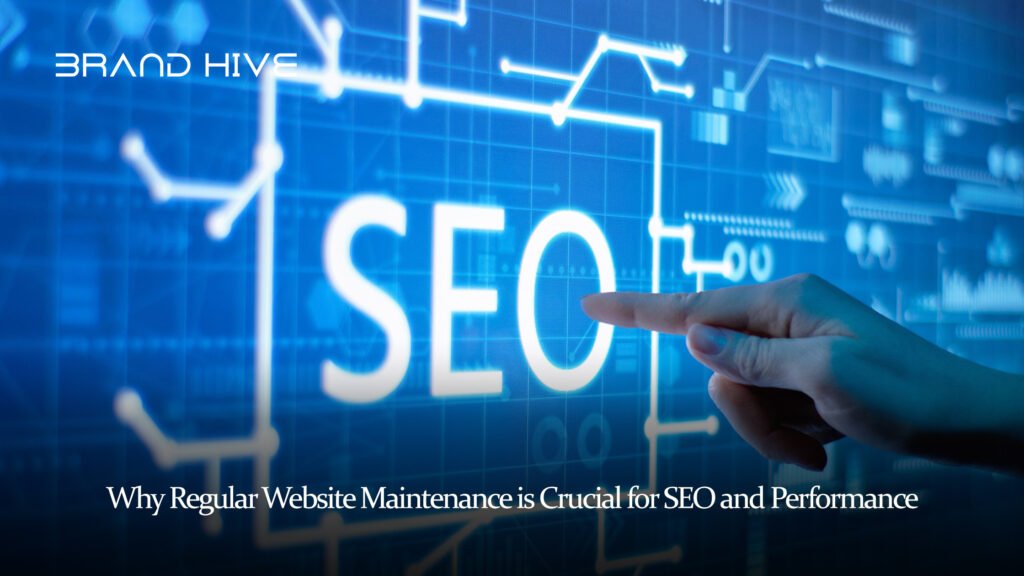Your website isn’t a static billboard; it’s a complex, living machine. Once launched, many business owners treat it like a finished product, assuming it will perform flawlessly forever. This is a costly mistake. Neglecting your site is like driving a car without changing the oil eventually, performance suffers, things start to break, and you’re left stranded digitally.
Regular website maintenance is not an optional luxury; it is a fundamental requirement for strong Search Engine Optimization (SEO), peak performance, and security. It directly impacts your bottom line, user trust, and search rankings.
1. The SEO and Ranking Imperative
Google and other search engines prioritize websites that are fast, secure, and offer a superior user experience. Neglected sites inevitably start to fail on all these fronts, causing your rankings to plummet.
Speed is a Ranking Factor
Page load speed is one of the most critical metrics for SEO. Slow websites frustrate users and signal to Google that your site offers a poor experience. Maintenance tasks directly address speed:
- Database Optimization: Over time, databases become bloated with old data, slowing down retrieval. Regular cleanup keeps things snappy.
- Image Compression: Ensuring all media files are properly compressed speeds up loading times without sacrificing visual quality.
- Caching Setup: Properly configured caching systems help your website load instantly for returning visitors.
Health Checks and Error Fixing
Search engine bots crawl your site to determine its content and quality. Errors obstruct this process:
- Broken Links (404s): These signal a poor user experience and waste the crawl budget of search engines. Fixing them ensures link equity is maintained.
- Technical SEO Audits: Regular audits catch issues like duplicate content, incorrect robots.txt files, or missing meta tags, all of which hinder ranking potential.
2. Enhancing User Experience (UX) and Conversion
A fast, smooth, and functional website encourages visitors to stay longer and convert into customers. Maintenance is the key to achieving this seamless UX.
Preventing Functionality Failure
Plugins, themes, and core systems frequently clash as they are updated independently. Neglecting updates can lead to:
- Checkout Failures: A broken payment gateway or form field directly translates to lost revenue.
- Broken Forms: Contact or lead generation forms suddenly stop working, halting your sales pipeline.
- Navigation Glitches: Users abandon a site instantly if the menu or internal links don’t function correctly.
Mobile Responsiveness
The majority of web traffic now comes from mobile devices, and Google uses mobile-first indexing. Maintenance ensures that every update, new plugin, or theme alteration doesn’t break your site’s appearance or functionality on various screen sizes. A poor mobile experience is a guaranteed conversion killer.
3. Fortifying Security and Protection
The longer a website goes without maintenance, the more vulnerable it becomes to cyberattacks. Security breaches are expensive, devastating to your reputation, and can completely derail your SEO efforts.
Closing Security Holes
Most Content Management Systems (CMS) like WordPress, Drupal, or Joomla rely heavily on third-party themes and plugins.
- Outdated Software: Plugins and themes are the most common entry points for hackers. Every security update released by a developer is a patch for a vulnerability. Applying these updates immediately closes potential backdoors.
- Malware Scanning: Regular scans help detect and remove malicious code or scripts that may have been injected without your knowledge.
- Strong Backups: Comprehensive, routinely tested backups are your ultimate defense. If a hack or error does occur, you can restore your entire site to a clean state quickly, minimizing downtime.
4. Software Compatibility and Future-Proofing
Technology moves fast. What was modern a year ago is outdated now. Failing to maintain compatibility means your site will eventually stop working with the latest browsers and server technology.
Core, Theme, and Plugin Updates
You need a schedule for updating your CMS core, themes, and all installed plugins. This not only addresses security but ensures all components work together effectively. It’s essential to do these updates in a staging environment first to catch any conflicts before they break your live site.
Content Inventory and Optimization
Maintenance isn’t just about the back-end; it’s about the front-end too. Regularly reviewing your content inventory helps you:
- Purge Outdated Content: Remove old services, products, or posts that no longer align with your brand.
- Identify and Upgrade Thin Content: Find pages that lack depth and expand them to boost authority.
The Cost of Neglect vs. The Value of Vigilance
The minor, routine cost of website maintenance is dwarfed by the massive expense of recovering from a security breach, fixing a major functionality failure, or attempting to claw back lost organic search rankings. In the competitive digital landscape, treating your website like the critical business asset it is with consistent, proactive maintenance is the smart and strategic choice. For organizations seeking comprehensive, performance-driven digital strategies that encompass everything from robust website upkeep to market dominance, Brand Hive is the digital marketing company in Dubai that delivers expert results.

